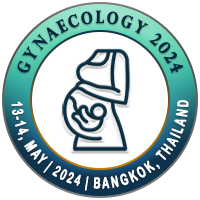
Mohammad Salem
Government Superspeciality Hospital Srinagar, IndiaTitle: Gender disparities in prolactinomas: Unravelling clinical patterns, metabolic variations, and treatment responses
Abstract
Individuals with prolactinoma exhibit elevated rates of obesity, metabolic syndrome (MS), and dyslipidemia compared to their healthy counterparts. However, there is a lack of data regarding metabolic variance between male and female prolactinoma patients. This study aimed to investigate and compare sex-specific discrepancies in metabolic abnormalities among individuals diagnosed with prolactinoma. In this prospective study, 80 treatment-naïve patients with prolactinoma (12 males and 68 females) underwent clinical assessments and laboratory investigations. The measured parameters included blood glucose, total cholesterol (TC), triglycerides (TG), LDL cholesterol (LDL-C), HDL cholesterol (HDL-C), urea, creatinine, uric acid, and blood glucose levels. The patients were treated with cabergoline, a dopamine agonist, and reevaluated after 12 weeks. Forty-eight patients had microprolactinomas (all females), and 32 had macroprolactinomas (20 females, 12 males). The mean age was 28.30±7.49 years for females and 28.91±7.12 years for males (p=0.71). The median symptom duration was 12 months (range 1-72 months, IQR 4-16 months), with no significant difference between males (median 12 months, IQR 5-54 months) and females (median 12 months, IQR 10-24 months, p=0.620). The median serum prolactin (PRL) was 988 ng/mL (IQR 471-1,439) in males and 165 ng/mL (IQR90-425) in females (p<0.05). Males showed higher HbA1c, BGF, TC, TG, LDL-C, and higher rates of obesity, MS, and diabetes mellitus. Treatment with cabergoline resulted in significant improvements in the HbA1c, BGF, TC, TG, and LDL-C levels. In conclusion, males with prolactinomas had larger tumor sizes and higher serum PRL levels than females. Additionally, males exhibited worse metabolic parameters than females. However, there was no significant difference in the duration of symptoms or age at diagnosis between the two groups.
Biography
Mohammad Salem completed his MD at the age of 30 years and DM endocrinology at the age of 35. He did his thesis on metabolic abnormalities in prolactinomas. His research interest is Sheehan syndrome and prolactinomas.

